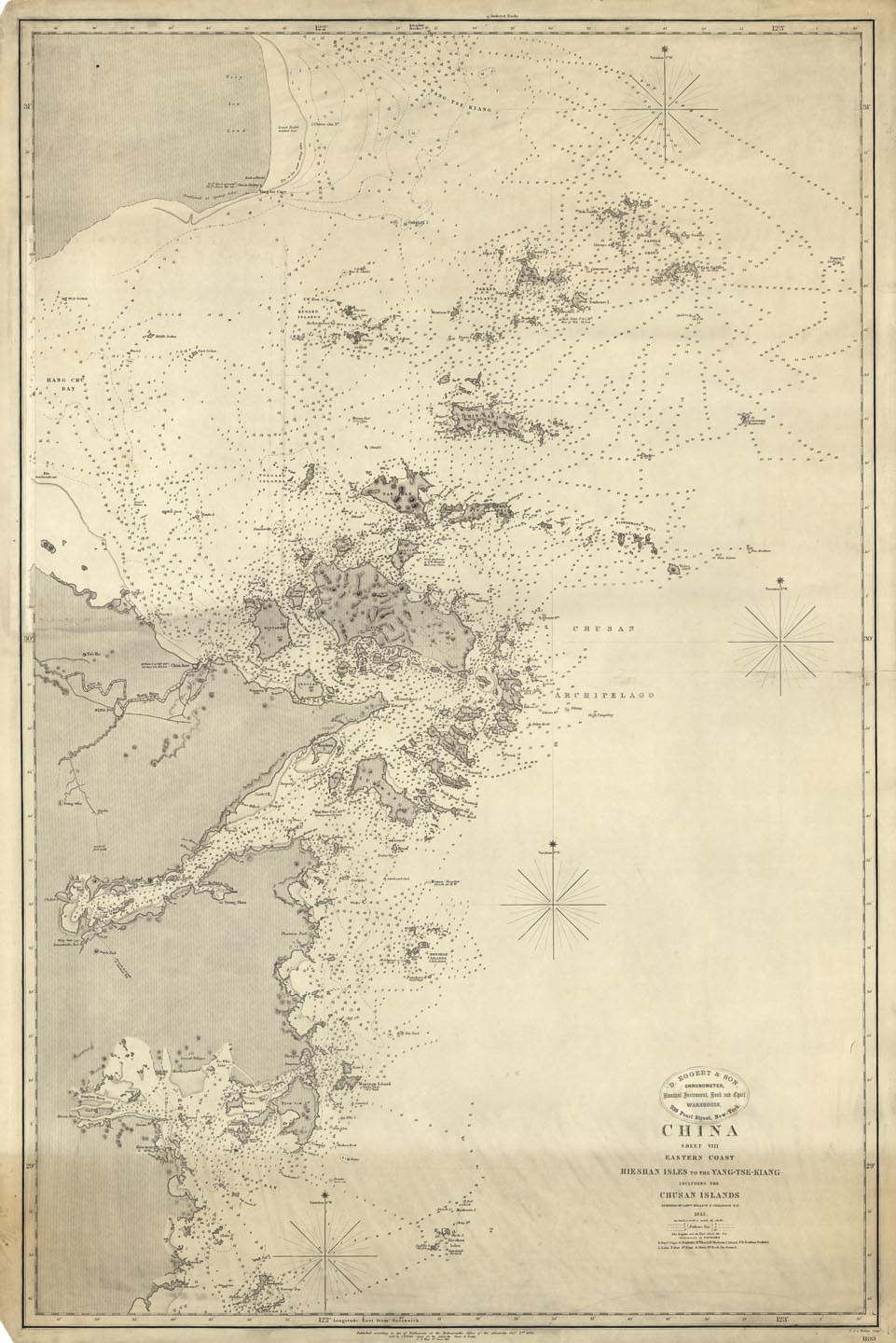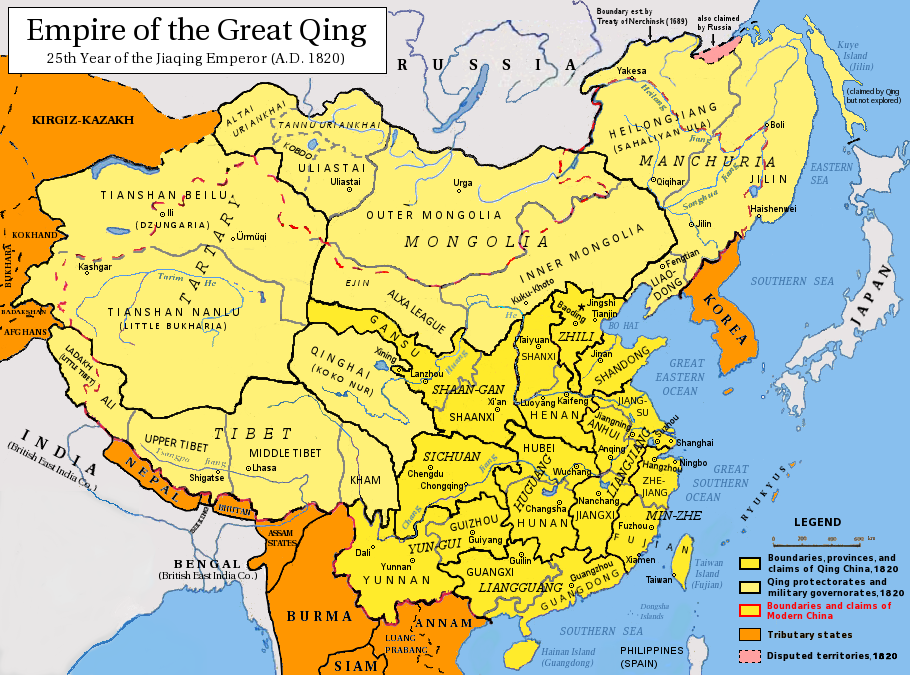|
Zhoushan Islands
Zhoushan is an urbanized archipelago with the administrative status of a prefecture-level city in the eastern Chinese province of Zhejiang. It consists of an archipelago of islands at the southern mouth of Hangzhou Bay off the mainland city of Ningbo. The prefecture's city proper is Dinghai on Zhoushan Island, now administered as the prefecture's Dinghai District. During the 2020 census, Zhoushan Prefecture's population was 1,157,817, out of whom 882,932 lived in the built-up (or metro) area made of two urban districts of Dinghai and Putuo. On 8 July 2011, the central government approved Zhoushan as Zhoushan Archipelago New Area, a state-level new area. History The archipelago was inhabited 6,000 years ago, during the Neolithic by people of the Hemudu culture. During the Spring and Autumn period, Zhoushan was called Yongdong, referring to its location east of the Yong River. At the time, it belonged to the state of Yue. The fishermen and sailors who inhabited ... [...More Info...] [...Related Items...] OR: [Wikipedia] [Google] [Baidu] |
Prefecture-level City
A prefecture-level city () or prefectural city is an administrative division of the China, People's Republic of China (PRC), ranking below a province of China, province and above a Counties of the People's Republic of China, county in China's administrative structure. Details During the Republican era, many of China's prefectural cities were designated as Counties of Taiwan, counties as the country's second level division below a province. From 1949 to 1983, the official term was a province-administrated city (Chinese: 省辖市). Prefectural level cities form the second level of the administrative structure (alongside prefecture of China, prefectures, Leagues of China, leagues and autonomous prefectures). Administrative chiefs (mayors) of prefectural level cities generally have the same rank as a division chief () of a national ministry. Since the 1980s, most former prefectures have been renamed into prefecture-level cities. A prefectural level city is a "city" () and "p ... [...More Info...] [...Related Items...] OR: [Wikipedia] [Google] [Baidu] |
Urbanization In China
Urbanization in China increased in speed following the initiation of the reform and opening policy. By the end of 2024, China had an urbanization rate of 67% and is expected to reach 75–80% by 2035. History Before industrialization China's increase in urbanization was one of the several functions of the surpluses produced from the agricultural sectors in China (farming and pastoral dependency). This judgment is based on (1) the fact that not until the end of the Qing period did Chinese begin importing moderate quantities of foodstuffs from the outside world to help feed its population; and (2) the fact that the handicraft sector never challenged agricultural dominance in the economy despite a symbiotic relationship between them. By the same token, urbanization rarely exceeded ten percent of the total population although large urban centres were established. For example, during the Song, the northern capital Kaifeng (of the Northern Song) and southern capital Hangzhou (of the ... [...More Info...] [...Related Items...] OR: [Wikipedia] [Google] [Baidu] |
City (China)
The administrative divisions of China have consisted of several levels since 1412, due to mainland China's large population and geographical area. In the People's Republic of China, the constitution provides for three levels of government. However in practice, there are five levels of local government; the provincial (province, autonomous region, municipality, and special administrative region), prefecture, county, township, and village. Since the 17th century, provincial boundaries in mainland China have remained largely static. Major changes since then have been the reorganization of provinces in the northeast after the establishment of the People's Republic of China in 1949 and the formation of autonomous regions, based on Soviet ethnic policies. The provinces serve an important cultural role in China, as people tend to identify with their native province. Levels The Constitution of the People's Republic of China provides for three levels: the provincial, the county level ... [...More Info...] [...Related Items...] OR: [Wikipedia] [Google] [Baidu] |
Prefecture-level City
A prefecture-level city () or prefectural city is an administrative division of the China, People's Republic of China (PRC), ranking below a province of China, province and above a Counties of the People's Republic of China, county in China's administrative structure. Details During the Republican era, many of China's prefectural cities were designated as Counties of Taiwan, counties as the country's second level division below a province. From 1949 to 1983, the official term was a province-administrated city (Chinese: 省辖市). Prefectural level cities form the second level of the administrative structure (alongside prefecture of China, prefectures, Leagues of China, leagues and autonomous prefectures). Administrative chiefs (mayors) of prefectural level cities generally have the same rank as a division chief () of a national ministry. Since the 1980s, most former prefectures have been renamed into prefecture-level cities. A prefectural level city is a "city" () and "p ... [...More Info...] [...Related Items...] OR: [Wikipedia] [Google] [Baidu] |
Postal Map Romanization
Postal romanization was a system of transliterating place names in China developed by postal authorities in the late 19th and early 20th centuries. For many cities, the corresponding postal romanization was the most common English-language form of the city's name from the 1890s until the 1980s, when postal romanization was replaced by pinyin, but the system remained in place in Taiwan until 2002. In 1892, Herbert Giles created a romanization system called the Nanking syllabary. The Imperial Maritime Customs Post Office would cancel postage with a stamp that gave the city of origin in Latin letters, often romanized using Giles's system. In 1896, the Customs Post was combined with other postal services and renamed the Chinese Imperial Post. As a national agency, the Imperial Post was an authority on Chinese place names. When the Wade–Giles system became widespread, some argued that the post office should adopt it. This idea was rejected at a conference held in 1906 in Sha ... [...More Info...] [...Related Items...] OR: [Wikipedia] [Google] [Baidu] |
East China Sea
The East China Sea is a marginal sea of the Western Pacific Ocean, located directly offshore from East China. China names the body of water along its eastern coast as "East Sea" (, ) due to direction, the name of "East China Sea" is otherwise designated as a formal name by International Hydrographic Organization (IHO) and used internationally. It covers an area of roughly . The sea's northern extension between Korean Peninsula and mainland China is the Yellow Sea, separated by an imaginary line between the southwestern tip of South Korea's Jeju Island and the eastern tip of Qidong, Jiangsu, Qidong at the Yangtze River estuary. The East China Sea is bounded in the east and southeast by the middle portion of the first island chain off the eastern Eurasian continental mainland, including the Japanese island of Kyushu and the Ryukyu Islands, and in the south by the island of Taiwan. It connects with the Sea of Japan in the northeast through the Korea Strait, the South China Sea i ... [...More Info...] [...Related Items...] OR: [Wikipedia] [Google] [Baidu] |
Yong River (Zhejiang)
The Yong River ( Chinese: , p ', Wu ') is one of the main rivers in China, located in Ningbo, Zhejiang Province. ''Yong'' is the name of the river, and also a short name for Ningbo, the city through which it flows. The name ''Yong'' comes from the ancient name of a mountain in the area. Yong River is formed by the convergence of two rivers, namely the Fenghua River, which flows through Fenghua, Yuyao and Cixi, and the Yao River, which passes through Shangyao and Siming Mountains. It empties into the East China Sea The East China Sea is a marginal sea of the Western Pacific Ocean, located directly offshore from East China. China names the body of water along its eastern coast as "East Sea" (, ) due to direction, the name of "East China Sea" is otherwise ... in Zhenhai District, Ningbo. See also * Yong River () in Guangxi References #(Chines宁波地理位置#(Chines北仑水系#(Chines Geography of Ningbo Rivers of Zhejiang {{China-rive ... [...More Info...] [...Related Items...] OR: [Wikipedia] [Google] [Baidu] |
Ningbo
Ningbo is a sub-provincial city in northeastern Zhejiang province, People's Republic of China. It comprises six urban districts, two satellite county-level cities, and two rural counties, including several islands in Hangzhou Bay and the East China Sea. Ningbo is the southern economic center of the Yangtze Delta megalopolis. The port of Ningbo–Zhoushan, spread across several locations, is the world's busiest port by cargo tonnage and world's third- busiest container port since 2010. Ningbo is the core city and center of the Ningbo Metropolitan Area. To the north, Hangzhou Bay separates Ningbo from Shanghai; to the east lies Zhoushan in the East China Sea; on the west and south, Ningbo borders Shaoxing and Taizhou respectively. As of the 2020 Chinese national census, the entire administrated area of Ningbo City had a population of 9.4 million (9,404,283). Ningbo is one of the 15 sub-provincial cities in China, and is one of the five separate state-planning cities ... [...More Info...] [...Related Items...] OR: [Wikipedia] [Google] [Baidu] |
Mountains Of China
The following is an incomplete list of mountains in China, the People's Republic of China, sorted in alphabetical order. Some of these mountains that are claimed by the PRC, including those List of mountains in Taiwan, under the control of the Republic of China and those disputed with other countries, such as Mount Everest, are noted after the list. List See also * Geography of China * Sacred Mountains of China * Mountains of Southwest China References {{Authority control Lists of mountains by country, China Mountains of China, * Lists of mountains of China, China Lists of mountains of Asia, China Lists of landforms of China, Mountains ... [...More Info...] [...Related Items...] OR: [Wikipedia] [Google] [Baidu] |
Islands Of China
This is a list of islands of the China, People's Republic of China (PRC). Islands that are claimed by the PRC, including List of islands of Taiwan, those under the control of the Republic of China and those disputed with other countries, are noted after the list. Chinese characters that mean island The following is a list of Chinese characters (traditional and simplified) that mean 'island', preceded by the Hanyu Pinyin pronunciation in Mandarin Chinese. *Dǎo () — the most generic character for island in the Chinese language *Yǔ () — mainly used around Fujian in the Min Chinese region *Shān () — commonly used in the south *Shā () — used in the South China Sea outlying islands or islands in rivers *Yán () or Yántóu () — used around Guangdong and Zhejiang *Zhì () — mainly used around Zhejiang; historically written as () *Ào () — often used around Zhejiang though it has mostly been replaced by () *Tuó () — often used in Northern China *Táng () or () — us ... [...More Info...] [...Related Items...] OR: [Wikipedia] [Google] [Baidu] |
Barge
A barge is typically a flat-bottomed boat, flat-bottomed vessel which does not have its own means of mechanical propulsion. Original use was on inland waterways, while modern use is on both inland and ocean, marine water environments. The first modern barges were pulled by tugs, but on inland waterways, most are pushed by Pusher (boat), pusher boats, or other vessels. The term ''barge'' has a rich history, and therefore there are many types of barges. History of the barge Etymology ''Barge'' is attested from 1300, from Old French ''barge'', from Vulgar Latin ''barga''. The word originally could refer to any small boat; the modern meaning arose around 1480. ''Bark'' "small ship" is attested from 1420, from Old French ''barque'', from Vulgar Latin ''barca'' (400 AD). A more precise meaning (see Barque) arose in the 17th century and often takes the French spelling for disambiguation. Both are probably derived from the Latin ''barica'', from Greek language, Greek ''baris'' "Eg ... [...More Info...] [...Related Items...] OR: [Wikipedia] [Google] [Baidu] |







